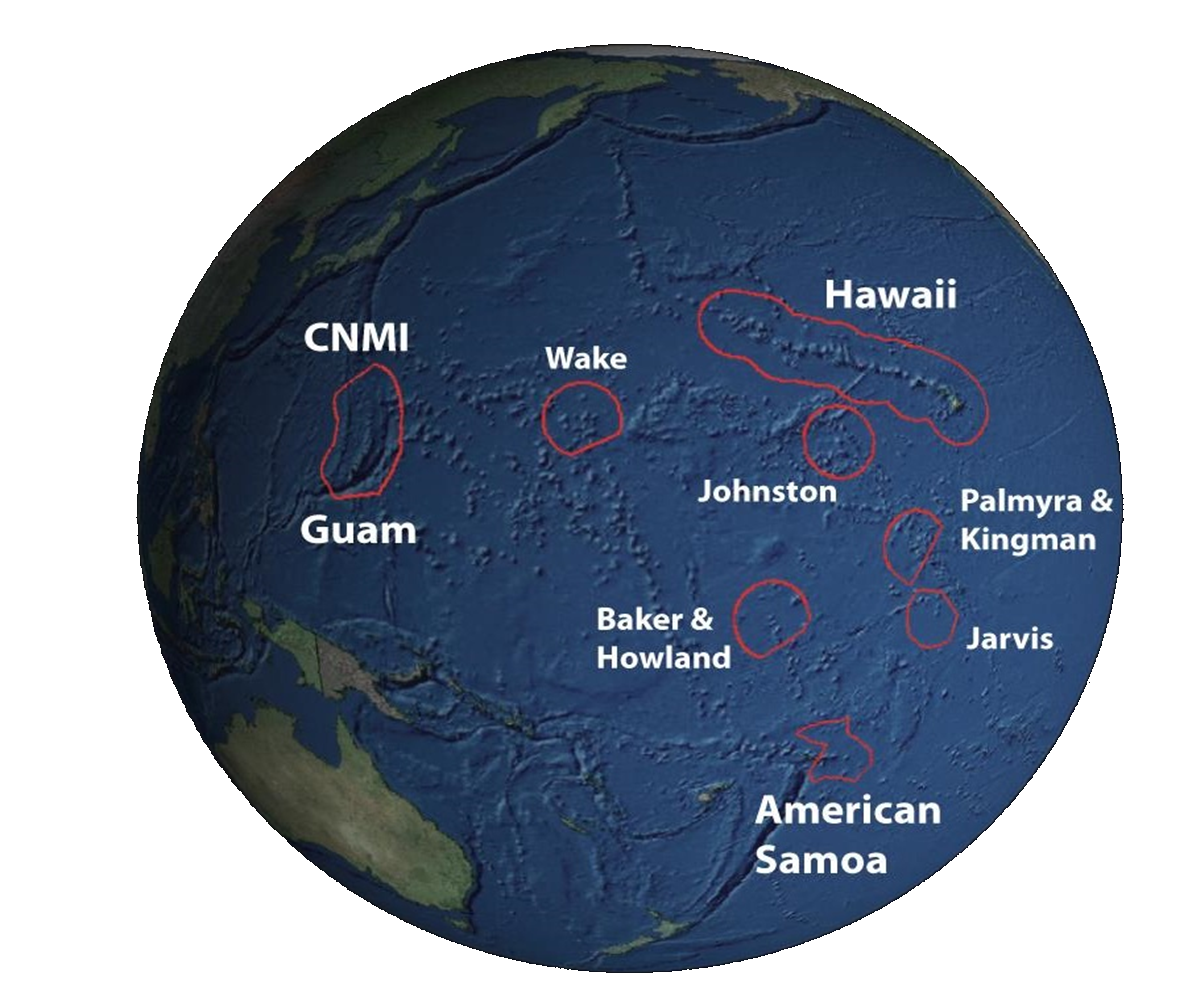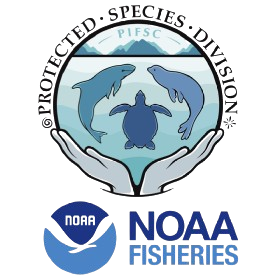MTBAP Landing Page
Who We Are

MTBAP Area of Research
The Marine Turtle Biology and Assessment Program (MTBAP) conducts research throughout the Pacific Ocean to support the conservation and management of threatened and endangered sea turtle populations.
We study sea turtle species that live in the North Pacific Ocean during one or more life stages, from hatchling to adult. This includes green, loggerhead, olive ridley, leatherback, and hawksbill turtles, all protected under the U.S. Endangered Species Act.
Our work is guided by species-specific recovery plans and conducted in collaboration with the U.S. Fish and Wildlife Service, other agencies, and community partners. The knowledge we generate informs management decisions and drives conservation actions across the Pacific Islands Region.
What We Do
Our primary goal is to understand, assess, and monitor sea turtle populations in the Pacific to support management needs and recovery goals mandated by the Endangered Species Act and other federal statutes.
We achieve this by:
- Conducting field and laboratory research to investigate sea turtle health, ecology, and life history
- Designing geospatial models that integrate population, ecological, satellite, and climate data
- Providing data streams, research infrastructure, and scientific leadership across the Pacific
Areas of Research
Our projects focus on the biological health, ecology, and threats to sea turtle populations, including:
- Population abundance estimates across Hawaiʻi, Guam, the Commonwealth of the Northern Mariana Islands, American Samoa, and other U.S. Pacific Territories
- Climate change effects on sea turtle populations and their habitats
- Movement patterns and habitat use
- Fisheries impacts and bycatch reduction
- Health consequences of tumor-forming diseases such as fibropapillomatosis
- Physiology and resource requirements
- Nesting and foraging ecology
- Threat assessments across life stages
Success Story: Green Turtles in Hawaiʻi

Sea Turtles Studied by MTBAP
One of the clearest examples of conservation impact is the recovery of the green turtle, or honu, in Hawaiʻi.
When our studies began in the 1970s, green turtle populations were severely depleted. Today, thanks to decades of conservation regulations and informed management, our monitoring data shows that Hawaiʻi’s honu are steadily rebounding and are now commonly seen in coastal waters.
Rescue and Rehabilitation
Since 1990, our team has worked with non-profit, community, and educational partners to rescue, rehabilitate, and release over 1,000 turtles throughout the Hawaiian Islands.
The most common causes of stranding are:
- Fibropapillomatosis (tumor-forming disease)
- Fisheries interactions (entanglement in fishing line or nets)
- Injuries from boat strikes or shark attacks
Through rescue efforts, we not only save individual turtles but also collect valuable data on the threats affecting sea turtle populations.
Partnerships
Partnerships are a fundamental component of our work and essential to the success of sea turtle research throughout the Pacific.
We collaborate with:
- U.S. federal and state agencies
- Local non-profits and community groups
- Educational and cultural organizations
- International partners and regional networks
These relationships strengthen conservation outcomes and extend the reach of our science.
By the Numbers
- 5 sea turtle species studied in the North Pacific
- 50+ years of long-term monitoring
- 1,000+ turtles rescued and rehabilitated
- Research conducted across Hawaiʻi, Guam, CNMI, American Samoa, and other U.S. Pacific Islands
Why It Matters
By studying population dynamics, evaluating threats, and supporting rehabilitation, MTBAP ensures that sea turtles continue to thrive as an ecological, cultural, and spiritual treasure for generations to come.
